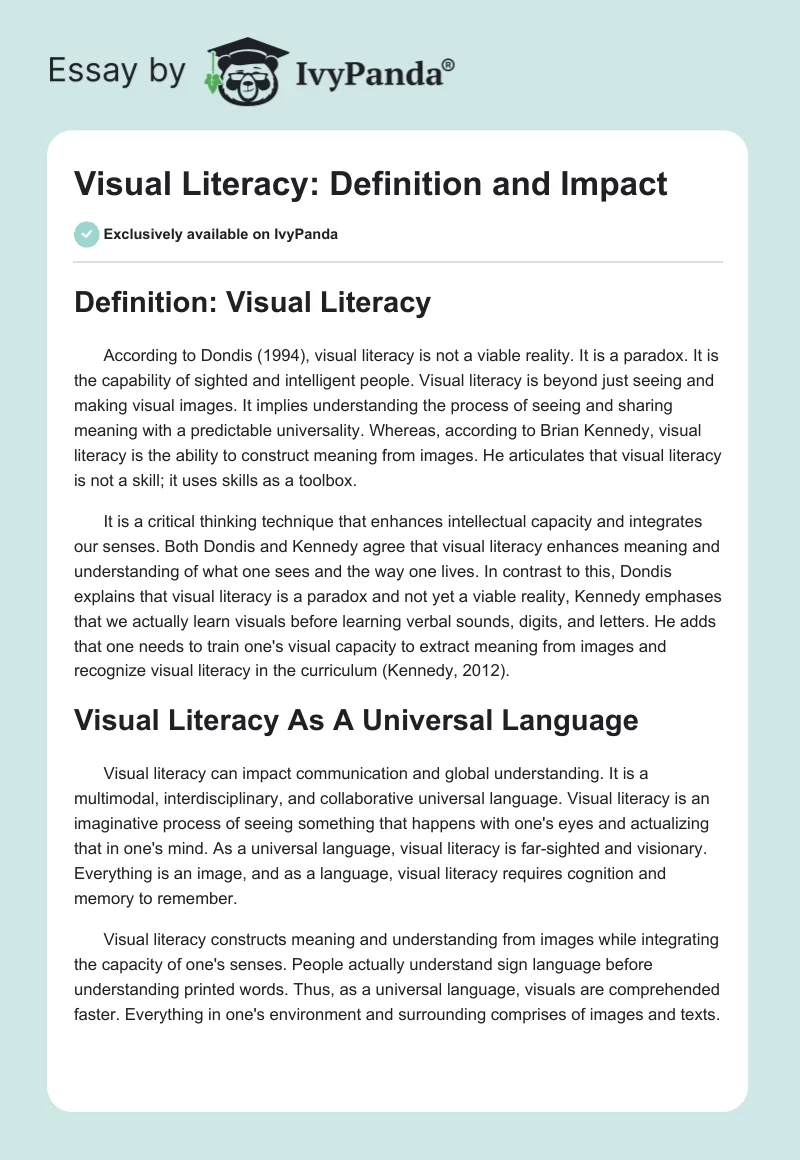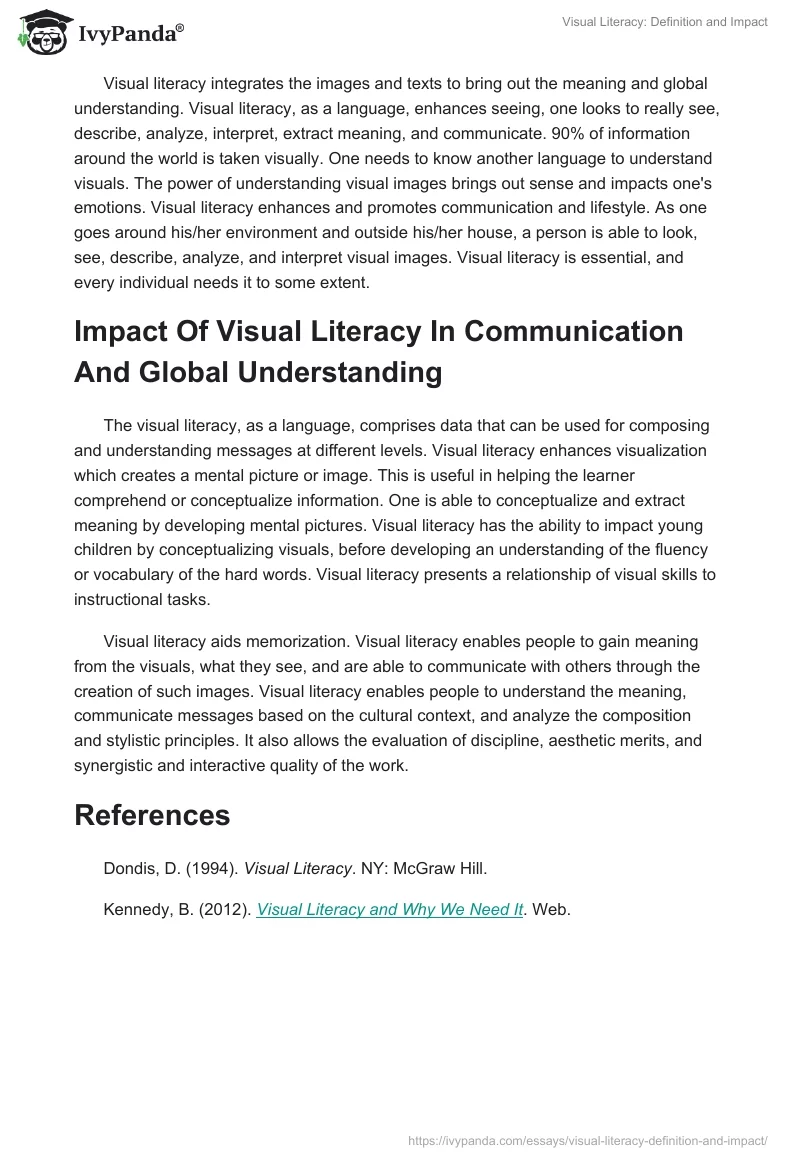Definition: Visual Literacy
According to Dondis (1994), visual literacy is not a viable reality. It is a paradox. It is the capability of sighted and intelligent people. Visual literacy is beyond just seeing and making visual images. It implies understanding the process of seeing and sharing meaning with a predictable universality. Whereas, according to Brian Kennedy, visual literacy is the ability to construct meaning from images. He articulates that visual literacy is not a skill; it uses skills as a toolbox.
It is a critical thinking technique that enhances intellectual capacity and integrates our senses. Both Dondis and Kennedy agree that visual literacy enhances meaning and understanding of what one sees and the way one lives. In contrast to this, Dondis explains that visual literacy is a paradox and not yet a viable reality, Kennedy emphases that we actually learn visuals before learning verbal sounds, digits, and letters. He adds that one needs to train one’s visual capacity to extract meaning from images and recognize visual literacy in the curriculum (Kennedy, 2012).
Visual Literacy As A Universal Language
Visual literacy can impact communication and global understanding. It is a multimodal, interdisciplinary, and collaborative universal language. Visual literacy is an imaginative process of seeing something that happens with one’s eyes and actualizing that in one’s mind. As a universal language, visual literacy is far-sighted and visionary. Everything is an image, and as a language, visual literacy requires cognition and memory to remember.
Visual literacy constructs meaning and understanding from images while integrating the capacity of one’s senses. People actually understand sign language before understanding printed words. Thus, as a universal language, visuals are comprehended faster. Everything in one’s environment and surrounding comprises of images and texts.
Visual literacy integrates the images and texts to bring out the meaning and global understanding. Visual literacy, as a language, enhances seeing, one looks to really see, describe, analyze, interpret, extract meaning, and communicate. 90% of information around the world is taken visually. One needs to know another language to understand visuals. The power of understanding visual images brings out sense and impacts one’s emotions. Visual literacy enhances and promotes communication and lifestyle. As one goes around his/her environment and outside his/her house, a person is able to look, see, describe, analyze, and interpret visual images. Visual literacy is essential, and every individual needs it to some extent.
Impact Of Visual Literacy In Communication And Global Understanding
The visual literacy, as a language, comprises data that can be used for composing and understanding messages at different levels. Visual literacy enhances visualization which creates a mental picture or image. This is useful in helping the learner comprehend or conceptualize information. One is able to conceptualize and extract meaning by developing mental pictures. Visual literacy has the ability to impact young children by conceptualizing visuals, before developing an understanding of the fluency or vocabulary of the hard words. Visual literacy presents a relationship of visual skills to instructional tasks.
Visual literacy aids memorization. Visual literacy enables people to gain meaning from the visuals, what they see, and are able to communicate with others through the creation of such images. Visual literacy enables people to understand the meaning, communicate messages based on the cultural context, and analyze the composition and stylistic principles. It also allows the evaluation of discipline, aesthetic merits, and synergistic and interactive quality of the work.
References
Dondis, D. (1994). Visual Literacy. NY: McGraw Hill.
Kennedy, B. (2012). Visual Literacy and Why We Need It. Web.


